sassafras (Sassafras albidum)
Lauraceae, the laurel family
How to recognize sassafras. The leaves are large, alternately arranged and variously entire (oval), or 2-3 lobed, often mitten-shaped, with smooth margins.
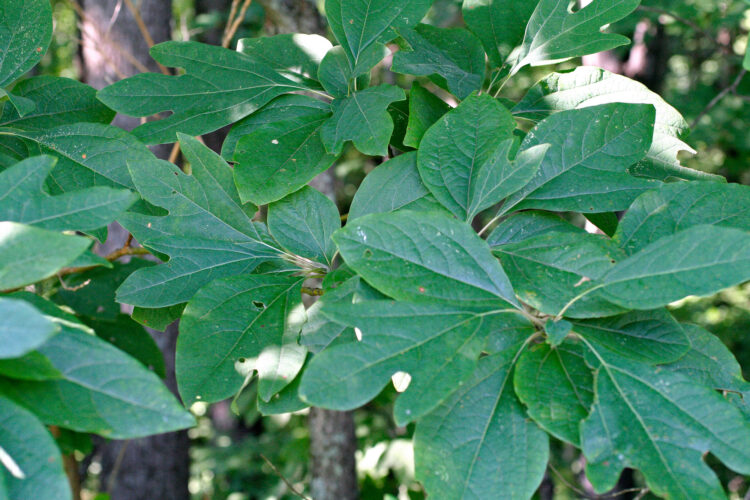
Is finding a 4-lobed sassafras leaf lucky?
Fruits. Sassafras is dioecious. Females produce blue-black drupes atop thickened upright stalks in branched clusters.
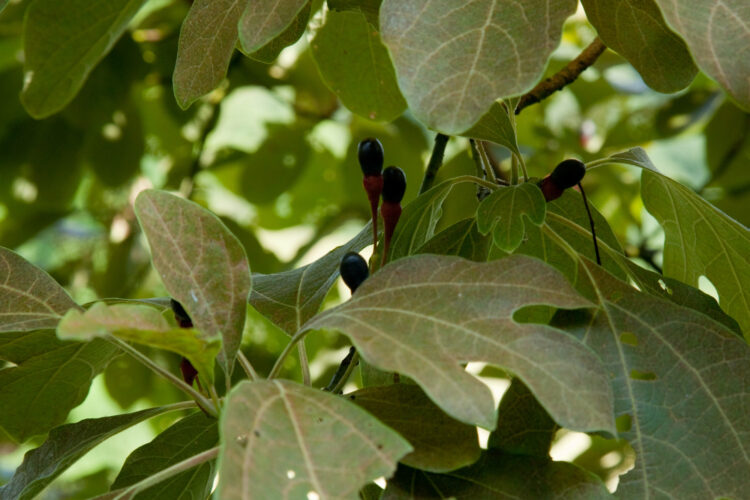
sassafras fruits
Bark. Sassafras bark is rough, red-brown, and deeply furrowed. Like all other parts of the plant, the bark is aromatic as well.
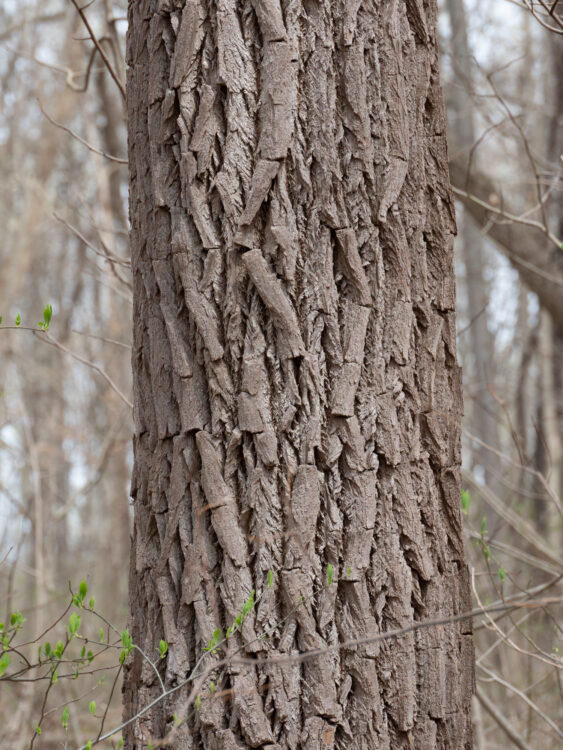
Sassafras bark is dark, scaly and aromatic.
In the winter. Sassafras twigs have a true end bud, scaly ovoid buds atop semi-circular leaf scars. They are bright green and have a side branch forking off the main one, forming a J-shape. They are very aromatic.
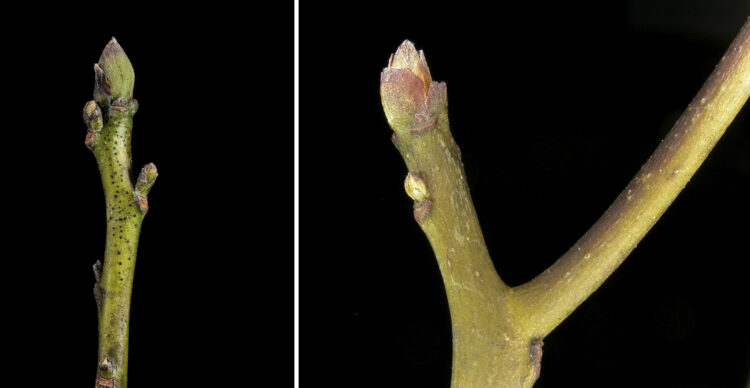
Sassafras twigs are aromatic.
Where to find sassafras. E. Lucy Braun, in The Woody Plants of Ohio (1961, 1989; The Ohio State University Press) tells us that “Sassafras is usually a small tree, with abundant root-shoots, hence may form extensive patches; occasionally 80-90 ft. in height and with trunk diameter of 6 ft”. Often a pioneer in fields and on open eroded slopes, in poor, usually non-calcareous soils. Found almost throughout Ohio, but infrequent northward and in the calcareous soils of western Ohio. Oil of sassafras, used in perfume soap and as a base for many perfumes, is distilled from the roots. The tree is aromatic throughout. A tea, more popular in the south than elsewhere, is brewed from the roots. An over-dose of the oil may act as a narcotic”.
Scanned Image from an Old Book
(Flora of West Virginia, by P.D. Strausbaugh and Earl L. Core)
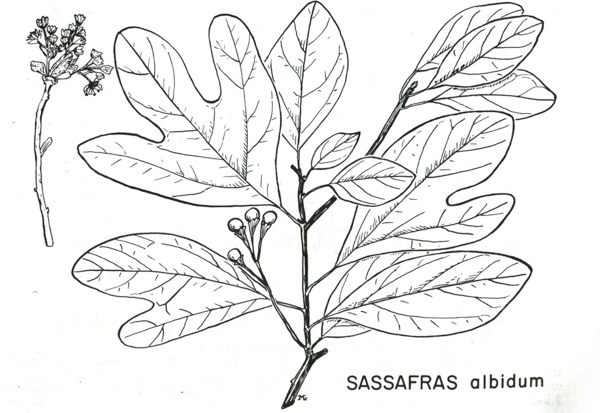
sassafras
Ooh ooh. I have a question!
Sassafras was used in traditional medicine and to flavor root beer as an herbal tea, but is not in use much anymore. Why not?
Sassafras contains safrole, a volatile oil, which has been classified as a likely carcinogen to humans, and banned as a food additive by the FDA.
(Apparently however it can still be gotten from online sellers. See below, a screen capture of one such seller. Also haha see what autocorrect did to the scientific name!)
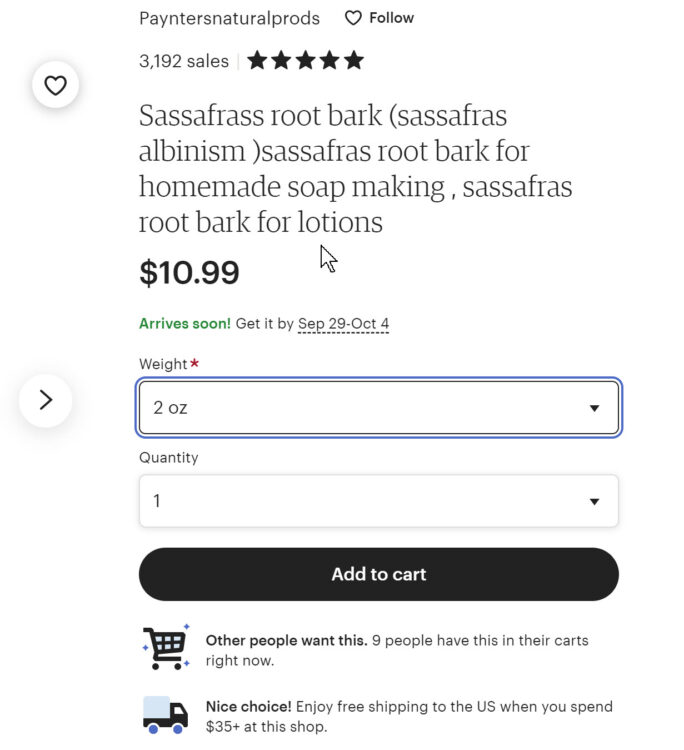
Sassafras albinism!
